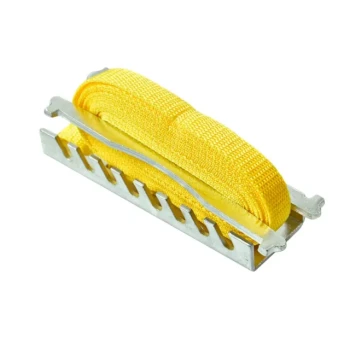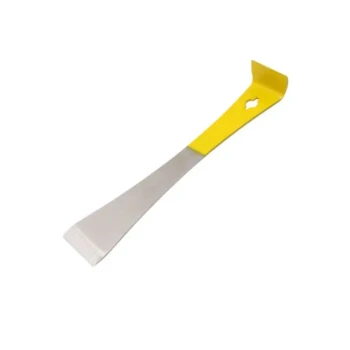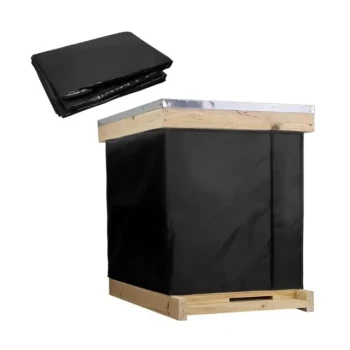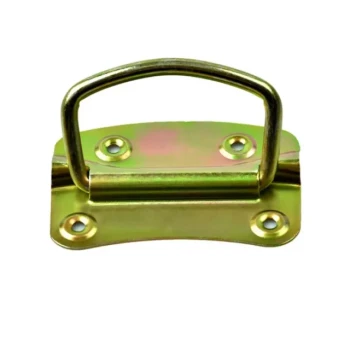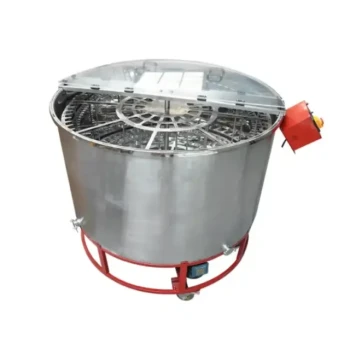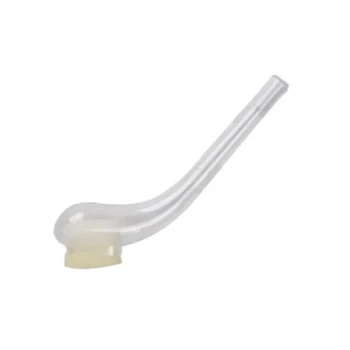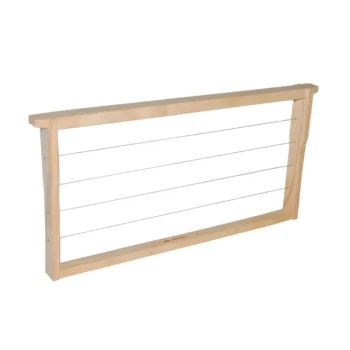At its core, a honey bee hive operates as a single, temperature-controlled superorganism. To achieve this, honey bees employ a sophisticated, collective strategy to maintain a stable internal climate. They actively cool the hive by fanning their wings to create airflow and using water for evaporative cooling, and they generate heat in the winter by forming a tight cluster and vibrating their flight muscles.
The true purpose of hive temperature regulation is not just comfort; it is a critical survival mechanism. By precisely managing heat and cold, honey bees ensure the viability of their developing young and the quality of their food stores, directly guaranteeing the colony's future.
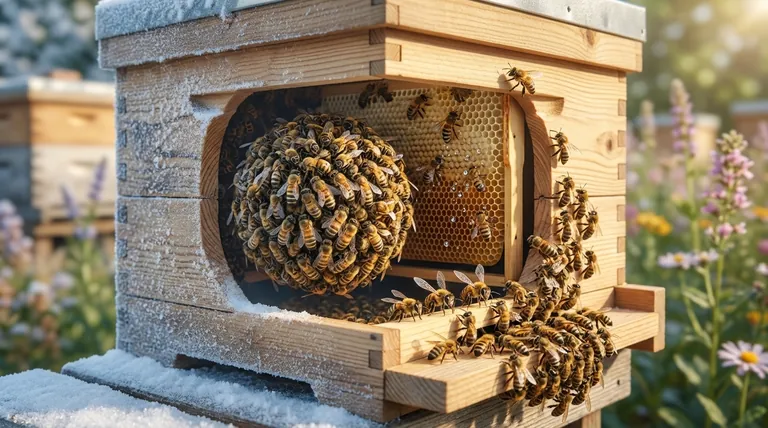
Why Precise Temperature Control is Non-Negotiable
A bee colony's long-term survival is directly tied to its ability to manage the hive's internal temperature. This is not a matter of preference but a biological imperative.
Protecting the Next Generation
The most critical task is raising brood—the hive's eggs, larvae, and pupae. This developing generation requires a remarkably stable temperature range of 32–35°C (90–95°F).
If the temperature deviates even slightly, larvae can die or develop into adults with deformities, jeopardizing the future workforce of the colony.
Optimizing Honey Production
Curing nectar into honey involves removing its high water content. Bees accelerate this evaporation process by maintaining warm temperatures and steady airflow inside the hive.
Proper thermoregulation ensures honey is produced efficiently and prevents it from fermenting or spoiling.
Enabling Winter Survival
In cold climates, the colony's ability to generate its own heat is the only thing that allows it to survive until spring. Without a method to stay warm, the bees would quickly perish.
The Hive's Cooling System: An Engineering Marvel
When external temperatures rise, bees initiate a series of coordinated behaviors to shed excess heat and prevent the wax comb from melting and the brood from overheating.
Coordinated Fanning
Specialized "fanner bees" position themselves at the hive entrance and throughout the interior, all facing the same direction. By beating their wings rapidly, they create a powerful and directed air current.
This coordinated effort creates negative pressure, pulling cool, fresh air into the hive through one area of the entrance while simultaneously expelling hot, stale, CO2-rich air out another.
Evaporative Cooling (Bee Air Conditioning)
During extreme heat, fanning alone is not enough. Forager bees switch from collecting nectar to collecting water, which they bring back to the hive.
House bees then take this water and spread it in thin films over the surfaces of the comb or as tiny droplets. As other bees fan this water, it evaporates, creating a powerful cooling effect—the same principle used in man-made evaporative coolers.
Bearding: A Sign of Overheating
You may see a large mass of bees clustered on the outside of the hive, forming a "beard." This is not a sign of swarming but a simple tactic to reduce population density and heat inside the hive.
By moving their bodies outside, they reduce the collective metabolic heat and improve airflow for the bees remaining inside.
The Hive's Heating System: Surviving the Cold
As temperatures drop, the colony's strategy shifts from shedding heat to generating and conserving it.
The Winter Cluster
Bees survive the cold by forming a tight ball known as the winter cluster, with the queen protected in the center.
The bees on the outer layer of this cluster pack themselves in tightly, creating a dense, insulating mantle that can be several inches thick. This mantle shields the bees on the inside from the cold.
Generating Heat Through Vibration
The bees within the cluster are responsible for generating heat. They do this by decoupling their wings from their powerful flight muscles and then vibrating these muscles rapidly.
This isometric exercise produces significant metabolic heat, turning the core of the cluster into a living furnace that keeps the colony warm enough to survive sub-freezing temperatures.
Rotating Positions
The work is shared across the colony. Bees will slowly and continuously cycle from the cold, exposed outer layer of the cluster to the warm interior. This ensures no single group of bees bears the brunt of the cold for too long.
Understanding the Trade-offs
This remarkable thermoregulation comes at a significant cost and has inherent risks.
The High Energy Cost
Both heating and cooling are incredibly energy-intensive. Keeping the cluster warm through the winter consumes a massive amount of honey stores. Similarly, the energy spent fanning during a heatwave is energy that isn't spent foraging.
Vulnerability to Blockages
The hive's ventilation system depends entirely on a clear entrance. An entrance that becomes blocked by snow, ice, or debris can be catastrophic, leading to suffocation from CO2 buildup or rapid overheating on a warm day.
The Limits of Regulation
While highly effective, the bees' ability to regulate temperature has its limits. A sudden, extreme cold snap can shrink the cluster too quickly, separating it from its food stores. A relentless, prolonged heatwave can overwhelm the colony's ability to source enough water for cooling.
How to Apply This to Your Project
Understanding these mechanisms reveals the hive's core priorities and the elegance of its collective logic.
- If the primary focus is cooling: The colony will sacrifice foraging for water collection and dedicate workers to fanning, demonstrating that brood survival outweighs immediate nectar gathering.
- If the primary focus is heating: The colony will form a tight cluster and consume significant honey stores, showing its willingness to burn through its winter food to protect the queen and core population.
- If the primary focus is efficiency: The colony's use of bearding demonstrates a sophisticated, low-energy first response before deploying more costly evaporative cooling.
Ultimately, a hive's ability to collectively manage its internal climate is the defining characteristic of its success as a superorganism.
Summary Table:
| Regulation Method | Purpose | Key Bee Behavior |
|---|---|---|
| Cooling System | Prevent overheating, protect brood & comb | Coordinated wing fanning, water collection for evaporative cooling, bearding |
| Heating System | Survive cold, protect queen & cluster | Forming a tight winter cluster, vibrating flight muscles to generate heat |
| Core Requirement | Ensure brood viability | Maintain a stable temperature of 32–35°C (90–95°F) |
Equip Your Apiary for Optimal Hive Health
Just like honey bees, successful beekeepers understand that the right equipment is fundamental to managing hive conditions and ensuring colony vitality. HONESTBEE supplies commercial apiaries and beekeeping equipment distributors with the durable, high-performance supplies needed to support these incredible natural processes.
From ventilation aids that assist with hive cooling to insulated equipment that aids in winter survival, our wholesale-focused operations provide the tools for success.
Contact HONESTBEE today to discuss your wholesale needs and discover how our beekeeping supplies can help your operations thrive, season after season.
Visual Guide
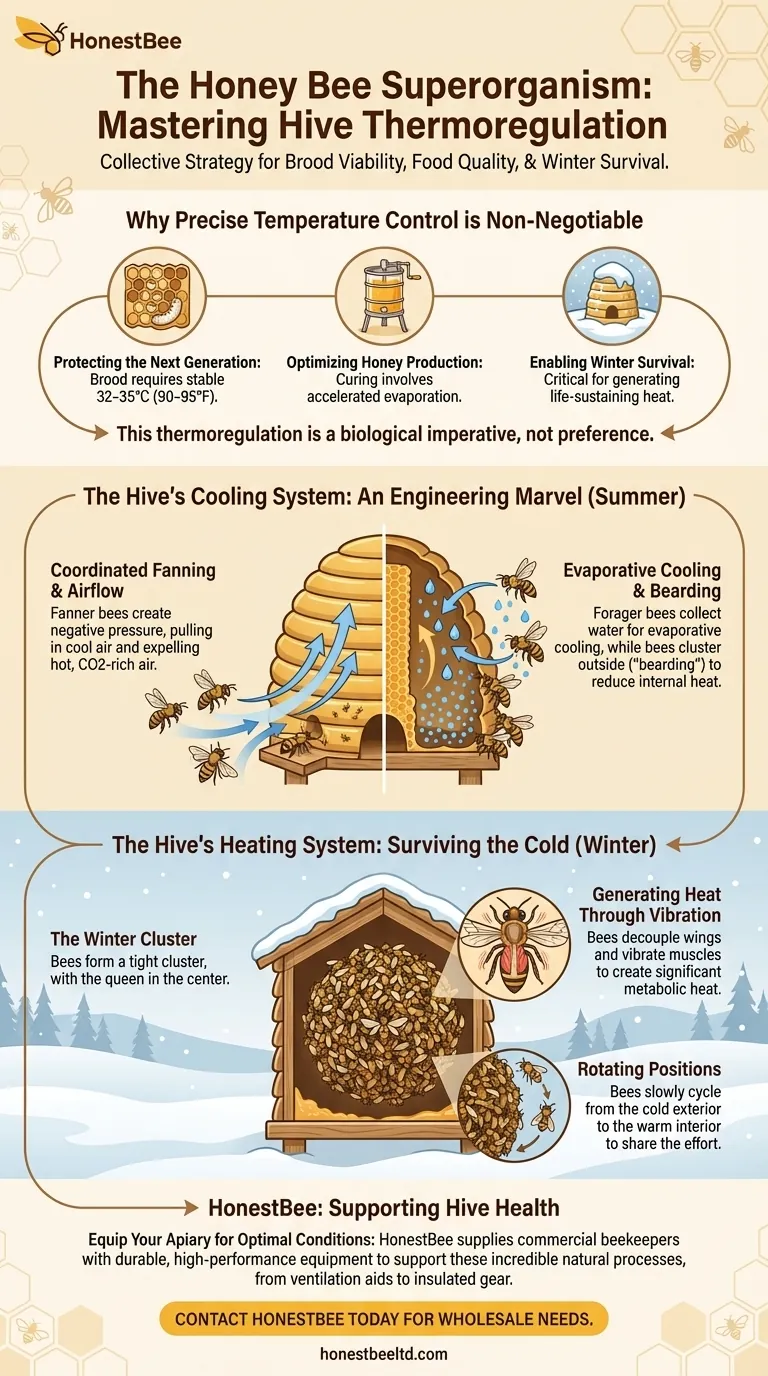
Related Products
- Professional Galvanized Hive Strap with Secure Locking Buckle for Beekeeping
- HONESTBEE Classic Pry Bar Hive Tool with High Visibility Finish for Beekeeping
- Long Langstroth Style Horizontal Top Bar Hive for Wholesale
- Professional Insulated Winter Hive Wrap for Beekeeping
- Heavy-Duty Stainless Steel Clip-On Frame Perch
People Also Ask
- What are the types of Emlocks available? Choose the Right Strap for Hive Security
- How should a cam buckle strap be installed for optimal performance? Master the Leverage for Maximum Tension
- What is the best length for straps used around beehives? Why 12 Feet is the Industry Standard
- What are hive straps and why are they used? Secure Your Hives Against Wind, Predators, and Transport
- What is the advantage of using cam buckle straps? Secure Your Load Fast with Simple, Safe Tensioning
